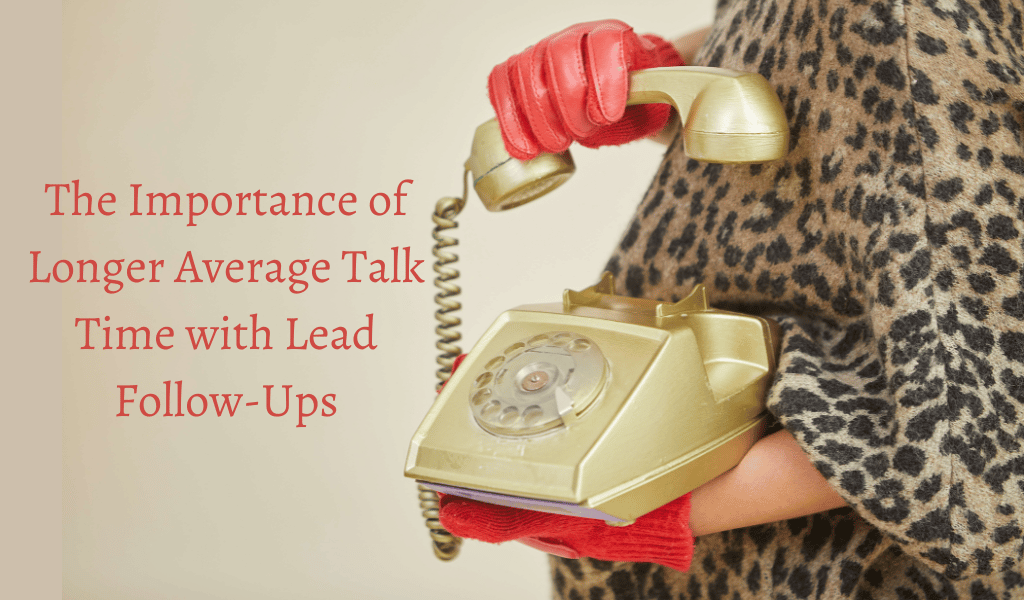Discover the benefits of extending your average talk time with lead follow-ups and find out what the ideal call length is.
Average talk time is a very interesting metric in the world of phone sales. Most frequently, the focus is on decreasing that talk time and making more calls to speak with more people. Indeed, there’s a case for reducing your average talk time, especially in high-volume call centers or if you’re taking surveys, for example.
However, depending on your approach and the goals of your organization, you may find there are more significant benefits from spending more time speaking with people. This might be the case with life insurance sales, real estate, or nonprofit fundraising drives. In these situations, your goal is to build lasting relationships and win the trust of your customer. And the way to do that is by talking to them.
Call Logic’s auto-dialer and call management software offers dozens of helpful tools to increase your success and simplify your daily tasks. Call for your free consultation today to learn more!
Why your average talk time matters
A lot of the information out there regarding the average talk time is in relation to inbound call centers. These are often customer service centers, and they base their level of efficiency and effectiveness on solving issues quickly. Therefore, longer talk times mean, in essence, that the agent isn’t performing up to standards, your customers are waiting longer to get problems resolved, or some mix of the two.
In sales, however, especially outbound sales and extra-especially with outbound follow-up sales calls, a longer average talk time means you’re laying the groundwork for a possible sale or, better, a long-term relationship.
This isn’t rocket science. Think about the last time you bought something big, whether that was a new appliance, a fancy bottle of wine, or a car. You want to talk to a knowledgeable salesperson, and you want to feel like they’re fully paying attention to you and helping you make the right choice.
Convection oven or regular? What’s the difference between wine A from southern Spain and wine B from Austria? Electric vehicle or gas? What are the benefits and drawbacks of each? You aren’t going to buy a $35,000 vehicle from someone rushing through the conversation. You “might” buy a $50 bottle of wine from someone hurrying you along, but you probably won’t go back to that shop.
Be aware, however, that a longer average talk time isn’t always the key to closing more sales. If your sales strategy isn’t working or your product or service isn’t right for someone, longer talk times aren’t going to help matters. At that point, you’re spending time and energy on a lost cause. Your prospect and you could both benefit from ending the call and moving on.
What is the ideal call time?
Here’s where things get really specific. Your average talk time in relation to sales and revenue is going to be drastically different depending on your industry. For example, a life insurance sales call might end with the prospect buying a $650 policy. By contrast, a mortgage broker may close a $400,000 deal.
Without getting into the nuances of commission, overhead, and so on, it’s pretty clear that the mortgage broker will likely need a longer average talk time to build a relationship with the customer and get into the finer details of the deal. And that takes time. That’s not to say people won’t have lots of questions about life insurance or which product is right for them. But it’s one thing to sign a contract for $650, and it’s quite another to take on hundreds of thousands in debt.
Of course, that’s a general look at things. How do you determine what’s right for your organization?
Perhaps the best approach is to record and time your calls. Then look at your average talk time in relation to your average sales. You can do this across your team and on an individual basis. And there’s a lot you can learn from it.
For example, if salesperson A has a higher average talk time than anyone else on the team, but has a lower sales rate, they might be struggling with the delivery or handling objections or any number of things. On the other hand, if salesperson A has those higher call times and is also the top performer, then you know something’s happening, and your other salespeople need to examine their approach, including call times.
The easiest way to explore that data is to use dialing software like Call Logic. You can record calls and run reports to find out how everyone on your team is doing and adjust your outbound sales strategy to reach your goals, including discovering the ideal average talk time for your team.
Call Logic’s auto-dialer software has the potential to transform your sales business. Find out how with a free demo right from the comfort of your home or office!

